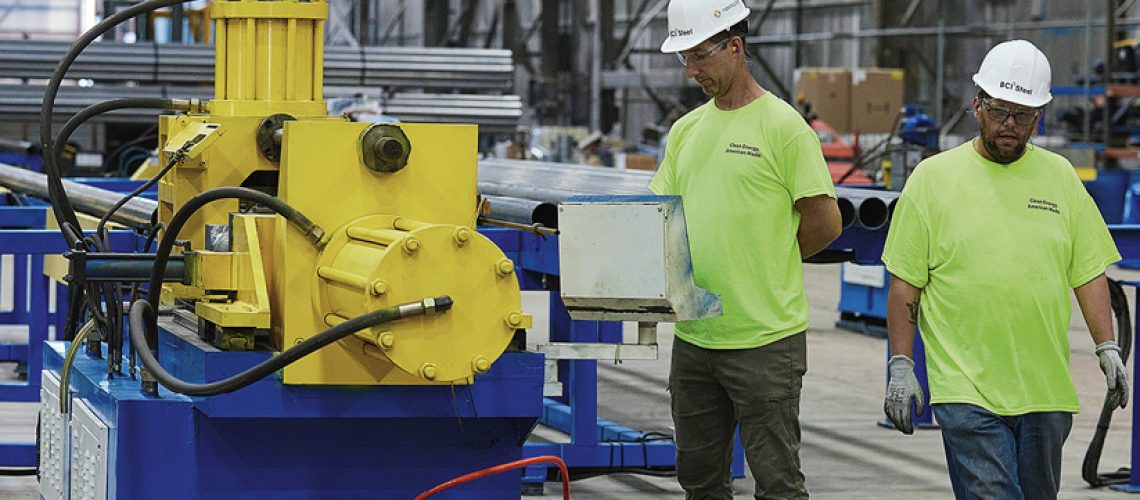Please keep your arms and legs inside the vehicle at all times, the solar coaster is about to move. With the signing of the Uyghur Forced Labor Prevention Act in November 2021, the Auxin Solar petition to the U.S. Department of Commerce and subsequent investigation launched in March 2022, and the $1.75 trillion Build Back Better Act stalled in Congress. The U.S. solar supply chain was broken and investment in domestic solar manufacturing was in free fall.
According to the U.S. Solar Energy Industries Association (SEIA), solar installation forecasts have been lowered for 2022 and 2023 by 46%. On August 16, the U.S. solar industry received an unexpected reprieve in the form of the $1.3 trillion, Inflation Reduction Act, which was signed into law by President Biden. Of this, the domestic solar supply chain is set to benefit from $60 billion of incentives.
I reached out to a cross section of U.S. solar industry participants for their perspectives on how this unprecedented new source of long-term economic support might impact business risk, investment, and M&A trends within the domestic solar manufacturing industry.
Key drivers of investment in U.S. solar manufacturing
According to Monica Wilson Dozier co-chair of Bradley Arant Boult Cummings LLP’s Renewable Energy Practice Group, “Supply chain volatility has particularly impacted U.S. development of renewable energy. In addition to constant technological change, the past several years have shown a variety of approaches to solar PV and battery storage plant component manufacturing – some successful, and others not.
“In an environment of ever-increasing demand, particularly in the wake of the Inflation Reduction Act, developers, contractors and their financing partners are eager to establish long-term procurement relationships with stable manufacturers. In order to do that, they are looking to diligence (1) technological capabilities, (2) manufacturing bandwidth and supply chain traceability, (3) financial stability, and (4) key warranties and product guarantees.”
A solid foundation for the future of U.S. solar manufacturing
Jordi Villanueva is the vice president of sales at Attala Steel, a subsidiary of EDSCO Fasteners and portfolio company of MiddleGround Capital. Attala Steel specializes in high volume, high-quality, low-cost posts for PV solar projects using 100% made-in-USA production. As he says, “The past two and a half years have brought unprecedented and unexpected challenges.”
“As a 16-year veteran in the solar industry I can confirm that, just like in life, the path to progress has never been a straight line for solar. Starting with a brutal pandemic, followed by extreme labor and material shortages, supply chain and transportation disruptions, regulatory setbacks, and several geopolitical challenges.
“Most of these challenges converging at the same time, in a ‘perfect storm’ fashion. The recently passed Inflation Reduction Act will bring the much-needed stability and predictability to the solar market. Additionally, we are finally beginning to see relief in the labor, materials, and supply chain markets, which make 2023 and onwards a very promising and exciting time for the U.S. solar industry.
“Our customers, mostly solar EPCs, are already releasing a sizeable number of projects for Q4 2022 and particularly for 2023. Some of these customers are also seeking to secure sufficient production capacity to support their future projects. Only time will tell which is the next ‘bump’ on the solar road, but it appears that we are finally headed towards a smooth stretch in the foreseeable future.”
Leading the way in U.S. solar infrastructure investing
Rick Brawn, managing director of operations at MiddleGround Capital, a private equity firm that invests in B2B companies in the industrial and specialty distribution sectors in the lower middle market in North America and Europe, says, “One of the reasons MiddleGround Capital (MGC) is investing in infrastructure and particularly in the solar industry is because we found ways to create value in our investments, particularly around solving supply chain issues. Our investments in solar help EPC customers and developers by reducing lead times and meeting their rapid growth plans.”
“We put capital to work by increasing capacity in the supply chain, adding equipment to accelerate delivery of critical product and by producing better quality products that meet new requirements such as the extended life of new solar fields. That’s why MGC invests in companies like Attala Steel and we continue to look for opportunities to invest in the solar industry. Finally, we continue to put resources into these investments and identify similar opportunities to create additional value in the supply chain for the solar industry.”
The U.S. solar industry of the future
Finally, Brad Ives, the recently announced executive director of the Center for the Environment at Catawba College in North Carolina, believes the supply chain for utility-scale solar projects needs a rapid increase in domestic manufacturing.
“The current shipping problems and costs, tariffs on Chinese panels, and concerns about possible forced labor by the Uyghur minority in Xinjiang, all are combining to drive up costs for imported solar panels at a time when the United States wants to rapidly increase the amount of solar energy being generated. The solution will be to develop meaningful manufacturing in the Southeastern U.S. that can supply just-in-time deliveries to 100+ MW projects.”
Jake Beaulieu is a director with Bundy Group, a 33-year-old, industry focused, boutique investment bank. He leads the firm’s Sustainability coverage efforts advising founders, owners and management teams in business sales, capital raises and acquisitions.



